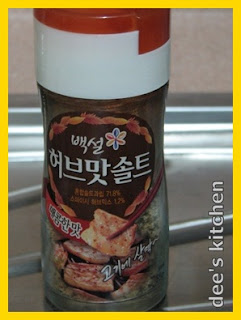Kochujang Samgyeobsal is grilled pork belly marinated in sweet spicy sauce. Imagine a spicy bbq without the skewers.
For this you can use a skillet or non stick fry pan instead of a grill. A stove top grill will work too.
We had a smagyeobsal party yesterday and plain pork belly is too mundane... so I decided to marinade some of the meat. It's recommended to marinade it overnight but because the meat had been delivered 15 minutes before our guests arrived, it only sat for 20 min. (We ate the plain pork belly first.) Nevertheless, it tasted great.
We cooked it on a stove top grill on a portable stove. It's a good idea to get one if you like grilled meat. The portable stove, you can buy at hardware stores. It's very convenient because it keeps your food hot as you eat. Works well for grilling and cooking shabu shabu.
This meat is best served with lettuce leaves, rice, and kimchi or other side dishes. Basically, you take a leaf of lettuce, you put meat, rice, and side dish/es, wrap it and and eat it as one large bite. I know, we are taught to put small amount of foods in our mouth as etiquette, but it's korean table manner to put the whole thing in your mouth. Well ultimately you'll eat the way you want, but just a tip when you eat this kind of food at a korean restaurant- make a wrap that fits in your mouth. ;)
Kochujang Samgyeobsal
Ingredients:
500g pork belly, sliced 1/8" thick
1 small onion sliced
2 cloves garlic, minced
2 pcs green onions (6" long)
Sauce
6 tbs kochujang
3 tbs sugar
1 tbs honey
1 tbs corn syrup
1 tbs cooking wine
1 tbs soy sauce
2 tsp sesame oil
1 tbs sesame seeds
Instructions:
1. Cut the pork belly into 1" pieces
2. Mix all the ingredients for sauce.
3. Add the all the remaining ingredients and the sauce.
4. Mix well with your hands.
5. Cover with plastic wrap and keep in the refrigerator. Marinade for atleast 30 min. or overnight.
6. Put meat on a hot skillet or top grill. Be careful not to burn.
7. When the fat starts to sizzle or melt, turn over to cook the other side.
8. Serve with lettuce wrap and rice.



























